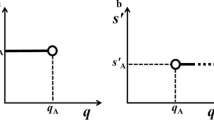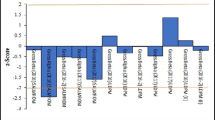Abstract
The definition of an assigned value is usually achieved by calculating mean values from the data (with different methods) or by designating reference laboratories. Neither method is completely satisfactory. In this paper a new method is presented for the definition of the assigned value for spiked samples with an unknown content of the analyte in the matrix. The method consists of two parts. The first is the estimation of the assigned values from the spiked amounts and the content in the matrix, based on the results of reference laboratories. The other is the designation of these reference laboratories by comparing their results with the assigned values. Because each of these parts requires the other, an iterative procedure is necessary. As an example, the results of a proficiency test for the analysis of copper in wastewater are used to compare the calculated values with those from other methods, e.g., the Huber estimation.
Similar content being viewed by others
Author information
Authors and Affiliations
Additional information
Received: 25 September 2000 Accepted: 9 December 2000
Rights and permissions
About this article
Cite this article
Koch, M., Metzger, J. Definition of assigned values for proficiency tests in water analysis. Accred Qual Assur 6, 181–185 (2001). https://doi.org/10.1007/PL00013517
Issue Date:
DOI: https://doi.org/10.1007/PL00013517




